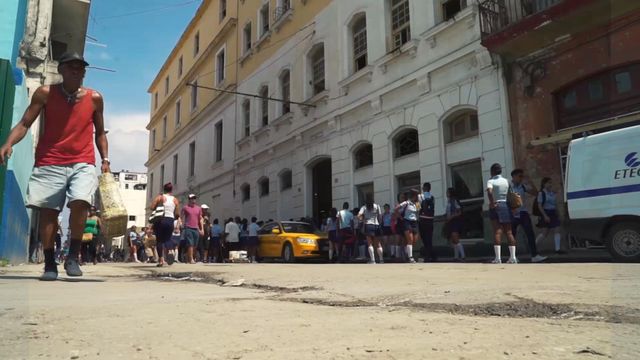It's very hard: Man describes life in Cuba today
Only 90 miles from the United States, Cuba is close. But it is time, not distance, that makes the island seem far away.
Posted — UpdatedHome to 11 million people, Cuba is a country where music can be heard anytime of day. It is an island filled with patriotism and people who sing and dance no matter the circumstance.
Known for its cigars and natural beauty, Cuba is also an island with one of the world’s highest literacy rates and a free education system. Beyond education, Cuba has an advanced health care system with an abundance of health care professionals, including Osmani Garzon, who works with ambulance services.
“Without the health care system, you have nothing,” Garzon said. “That’s why it is very important – just like education or like the water you drink. It is very important.”
The vast majority of Cuban families rely on the Libreta de Abastecimiento, or “supplies booklet,” distribution system. The system establishes the rations each person is allowed to buy.
Every Cuban gets a rationed amount of rice, black beans, sugar, chicken, coffee, pasta, matches and cooking oil per month.
Antonio Ponse said it is not enough to feed himself and his two sons.
Juan Rodriguez agrees. He said life in Havana is not easy.
“We are surrounded by the sea, and this year in Cuba, we have received fish one time through rations in the meat market,” Rodriguez said. “It’s very hard. Here the salaries are too low.”
The average salary for a Cuban is about $15 per month. A teacher will make about $25, and a doctor makes about $40.
Many people struggle to supplement the earnings for the rest of their needs.
Enma Negrett, of Havana, said she depends on money sent from her niece in Las Vegas. Even so, her refrigerator contains only a small pack of meat and some water. She said that is the norm.
Many Cubans blame the U.S. embargo for these conditions. The embargo, put in place by President John F. Kennedy in 1962, halted trade with Cuba in an effort to combat communism.
Communism came with the rise of the Cuban Revolution, which was led by Fidel Castro. Eventually, Cuba became an ally of the Soviet Union.
In October 1962, Kennedy learned that Soviet ballistic missiles were deployed in Cuba as part of an agreement reached during a secret meeting between Soviet leader Nikita Khrushchev and Castro.
Cuban anthropologist Ernesto Valdes was 10 years old during the Cuban Missile Crisis.
“Our fathers, uncles, big brothers were mobilized,” Valdes said. “The country was completely mobilized, and there was a call to battle that scared us, and we were very confused.”
Confused and afraid on the island, just like many in the U.S., people feared war at any minute.
“We believed it, we believed it. Every home had a weapon,” Valdes said. “It was very ugly, and we felt fear and at the same time we felt the desire to keep Cuba independent because what Cuba wanted was simply to be independent.”
Cuba maintained it independence, and its tense relationship with the U.S. remained intact for years.
The crumbling infrastructure and old cars are two constant reminders of what was once in Cuba and the reality of today.
• Credits
Copyright 2024 by Capitol Broadcasting Company. All rights reserved. This material may not be published, broadcast, rewritten or redistributed.





